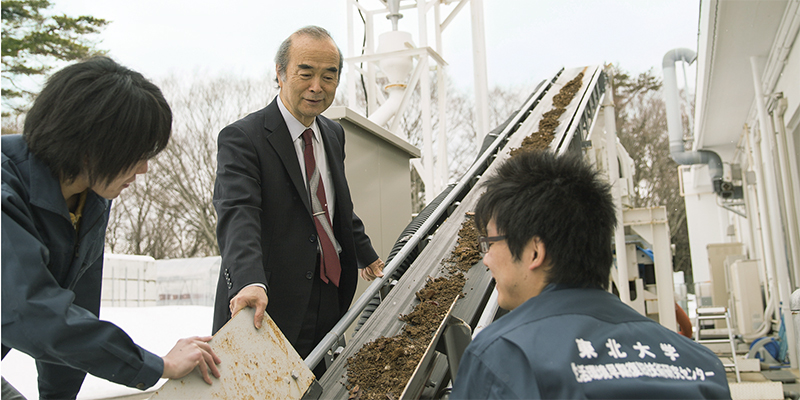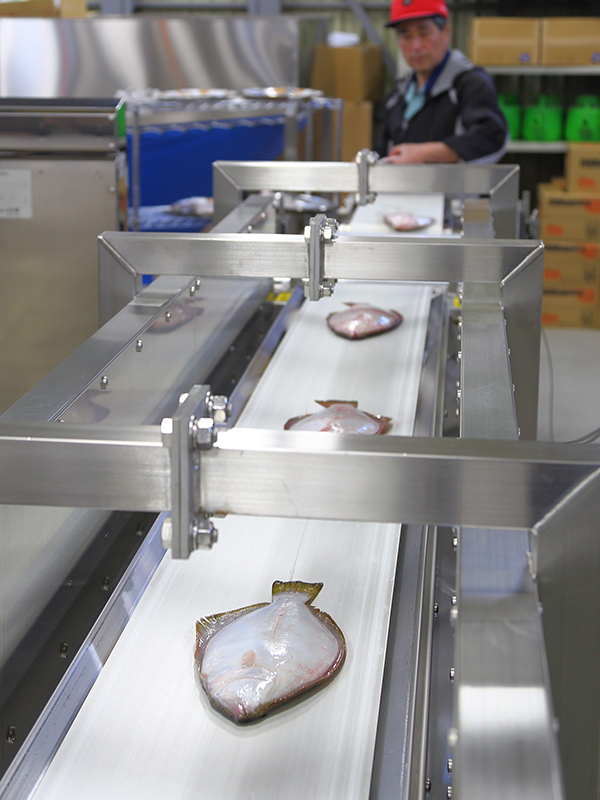
My research work started from studying nuclear physics and atomic physics. In particular, I studied Particle Induced X-ray Emission (PIXE) and applied it to trace elemental analysis, by which elements from Na to U can be analyzed simultaneously, the so-called PIXE method. Furthermore, I developed the micro-PIXE analysis by which the spatial distributions of the elements in a living cell can be investigated. In parallel to the research on PIXE, I have developed Positron Emission Tomography (PET) which can image the function of a living body. Recently, I succeeded in developing a super-high resolution semiconductor PET which provides photography of a 1 mm-sized cancer for the first time in the world.
At present, I am carrying out R&D on technologies that produce early restoration of the living environment contaminated by the accident of the Fukushima Daiichi nuclear power plant after the Great East Japan Earthquake on 11 March, 2011. I found that the activity of soil decreased 1/25 by washing the soil three times with the water and radioactive substances enveloped in clay. Based on this result, I and my colleagues decontaminated approximately 7000 m2 of the school grounds at two elementary schools and two kindergartens in Marumori town by removing contaminated soil and washing it to reduce its volume. Here we used a compact mixer to wash soil and put muddy water into filter cloth sacks used in brewing alcohol. We then spun the sacks in a washing machine to remove the water content and took out clay that contained large amounts of radioactive Cesium. Now, to make this method practical on a large scale, we are developing a miniature decontamination plant.
The space dose rate in Fukushima Prefecture decreased little by little due to the decay of radioisotopes and the weathering effect from wind and rain as well as other reasons (spread of mushroom spores, movement of microbes, etc.). In order to predict the recovery of agricultural and forestry-related industries in the disaster-stricken area, we developed a system for precisely measuring how the radiation levels changed over time in the mountains of Fukushima Prefecture.
Analyzing an ear of rice grown in soil containing Cesium by the micro-PIXE method, we could ascertain that Cesium had accumulated in the rice bran and embryo.

Using PET technology, we developed "Continuous Individual Non-destructive Type Radioactive Contamination Inspection Equipment" for marine products. Fish are placed intact on a conveyor belt approximately 12 meters in length, and the system measures the concentration of radioactive Cesium in the fish using 120 individual detection devices. This system can examine the fish without destroying them, and if nothing was abnormal the fish can then be shipped on afterwards. This system enables inspection of a maximum of 1400 fish per hour. This system is also used to inspection of bamboo shoots and supports shipping of bamboo shoots in Marumori town. We developed "Complete Rapid Contamination Inspection Equipment" which can precisely examine and measure radioactive substances without damaging the food and with a precision comparable to the nearly conventional methods. About twenty of this inspection equipment are running in Fukushima city and other places.


